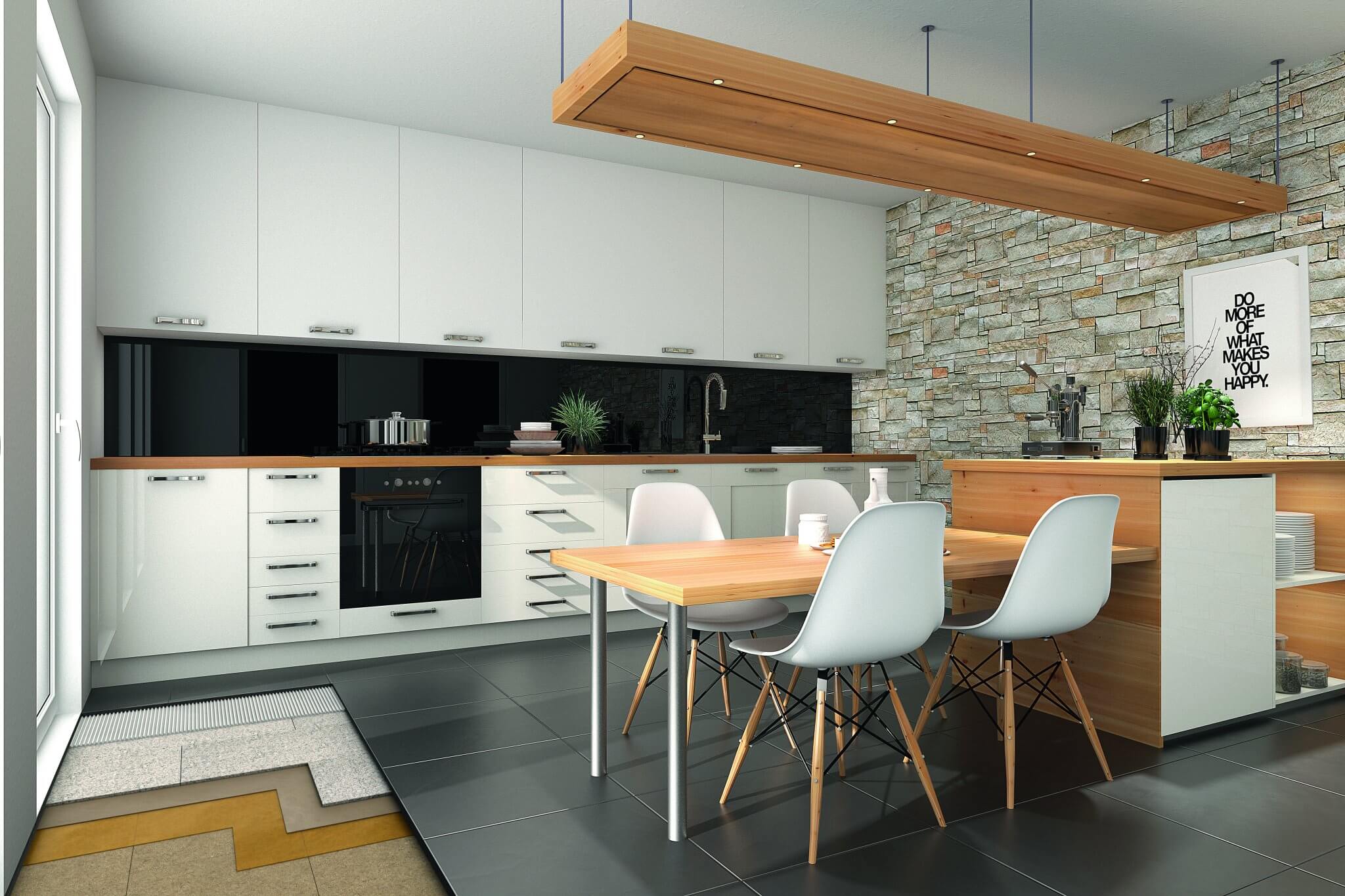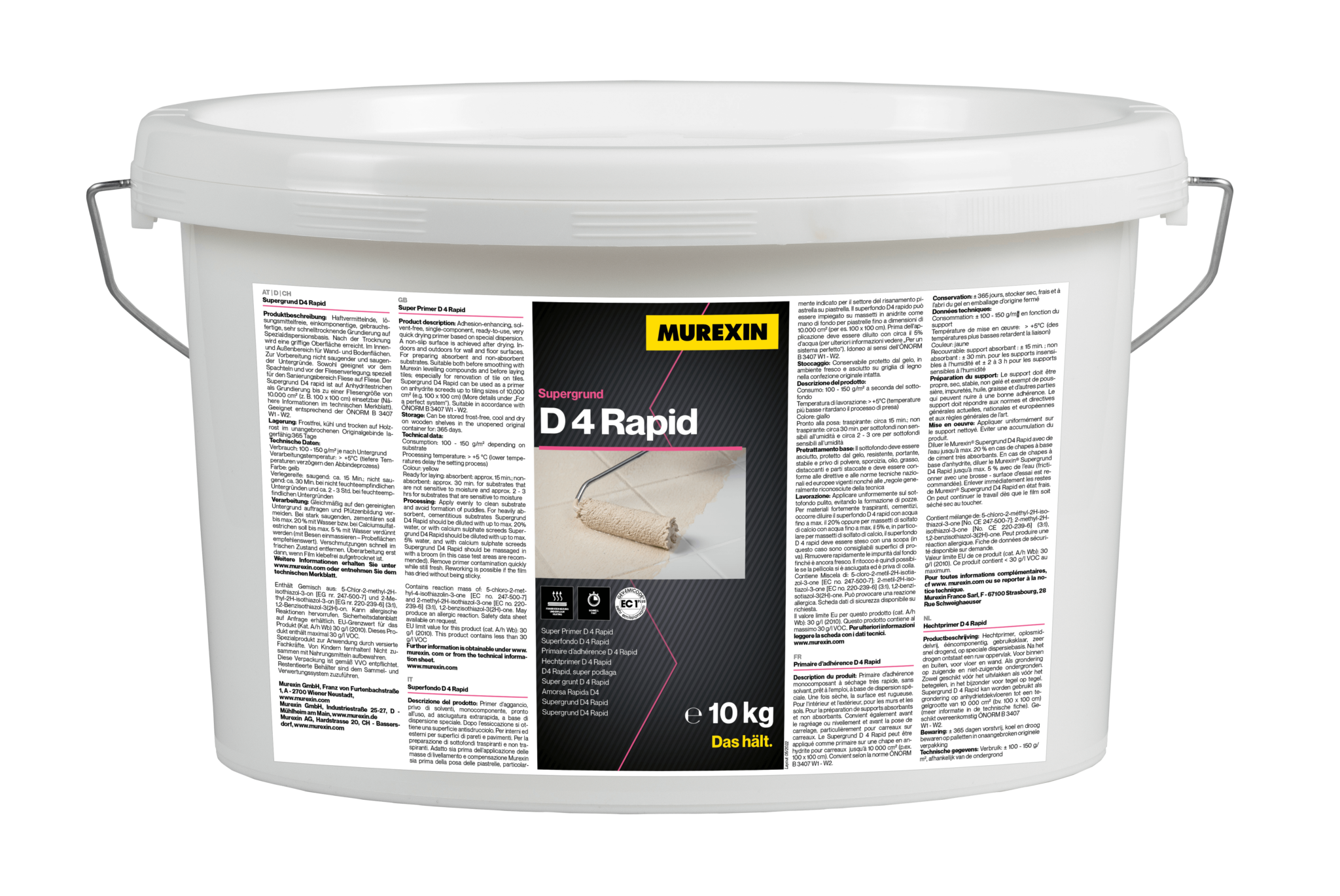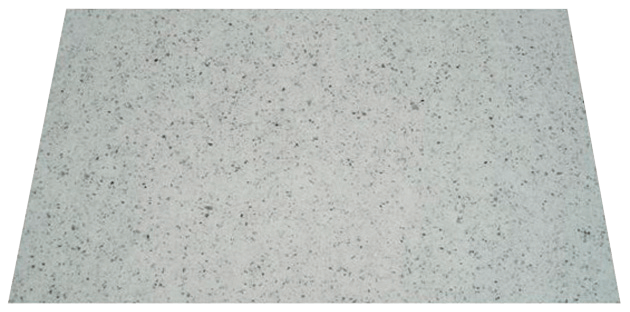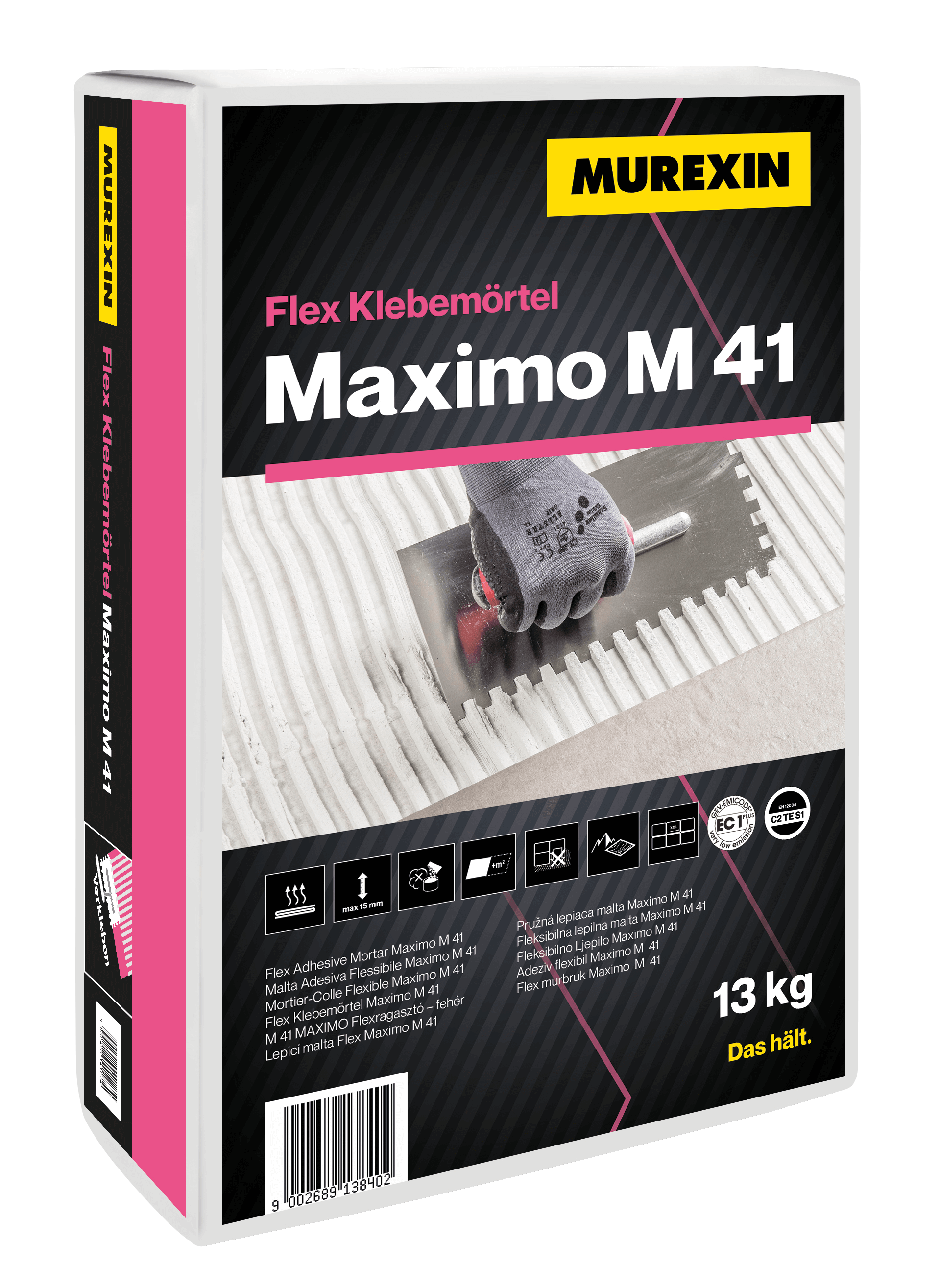
Murexin
Chipboard
- 1 | SUPER PRIMER D 4 RAPID
- 2 |
- 3 | UNITOP DECOUPLING BOARD
- 4 | FLEX ADHESIVE MORTAR MAXIMO M 41
- 5 |
- 6 |
Wood is a natural building material that works – its volume increases or decreases as a result of the humidity in the room. This swelling and shrinking behaviour creates movements which can make the laying of tiles and slabs a risky process.
Chipboard does not represent a standard substrate, and therefore fall under the category of special constructions. It must be fixed, stable, level, load-bearing and free of deformation. In addition, it must be separated from the finished surface covering by a decoupling system before laying a ceramic covering.
There should be a minimum distance of 10 to 15 mm between chipboard and adjacent components. The chipboard must have a thickness of at least 25 mm or 2 x 16 mm on the floor, and at least 19 mm on the wall. The tongue and groove joints must be firmly bonded and screwed.
The installation of underfloor heating systems is not permitted on OSB panels. We recommend sanding the wooden surface and priming it with Super Primer D4 . Edge joints are to be filled elastically or left open. According to ÖNORM EN 312, chipboard must correspond to types P3, P5 or P7 for use in damp areas.

 SUPER PRIMER D 4 RAPID
SUPER PRIMER D 4 RAPID
 UNITOP DECOUPLING BOARD
UNITOP DECOUPLING BOARD
 FLEX ADHESIVE MORTAR MAXIMO M 41
FLEX ADHESIVE MORTAR MAXIMO M 41